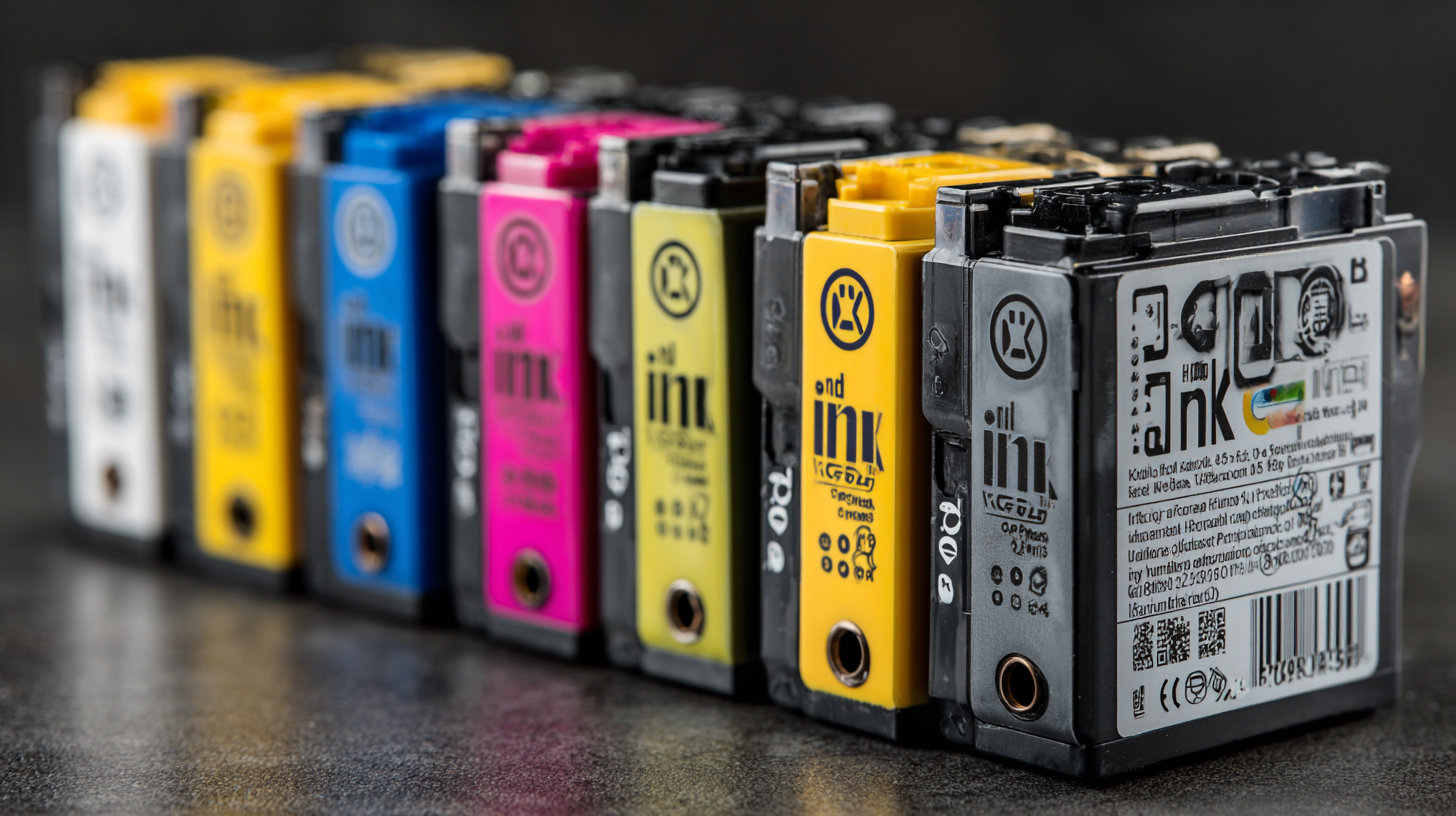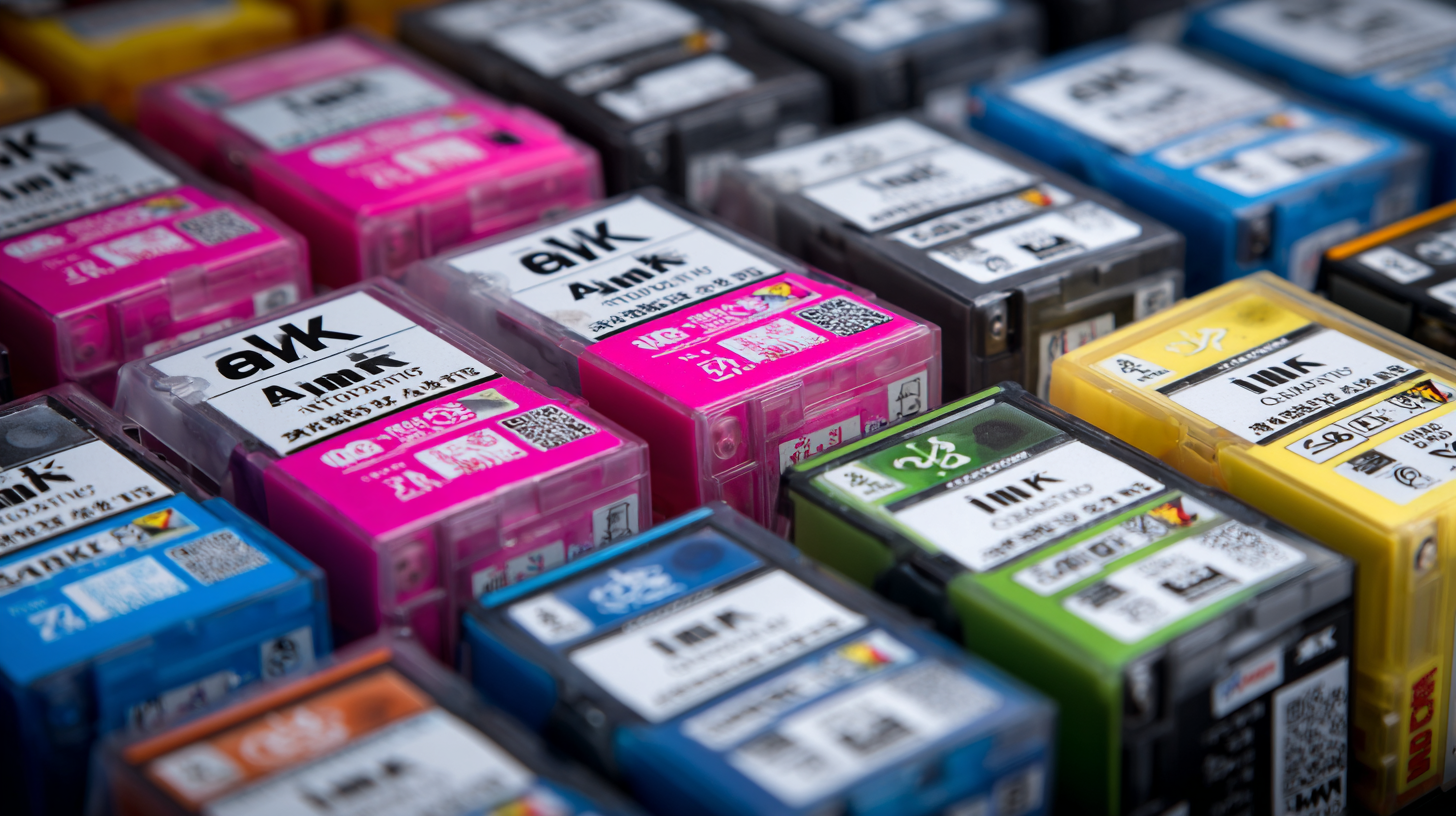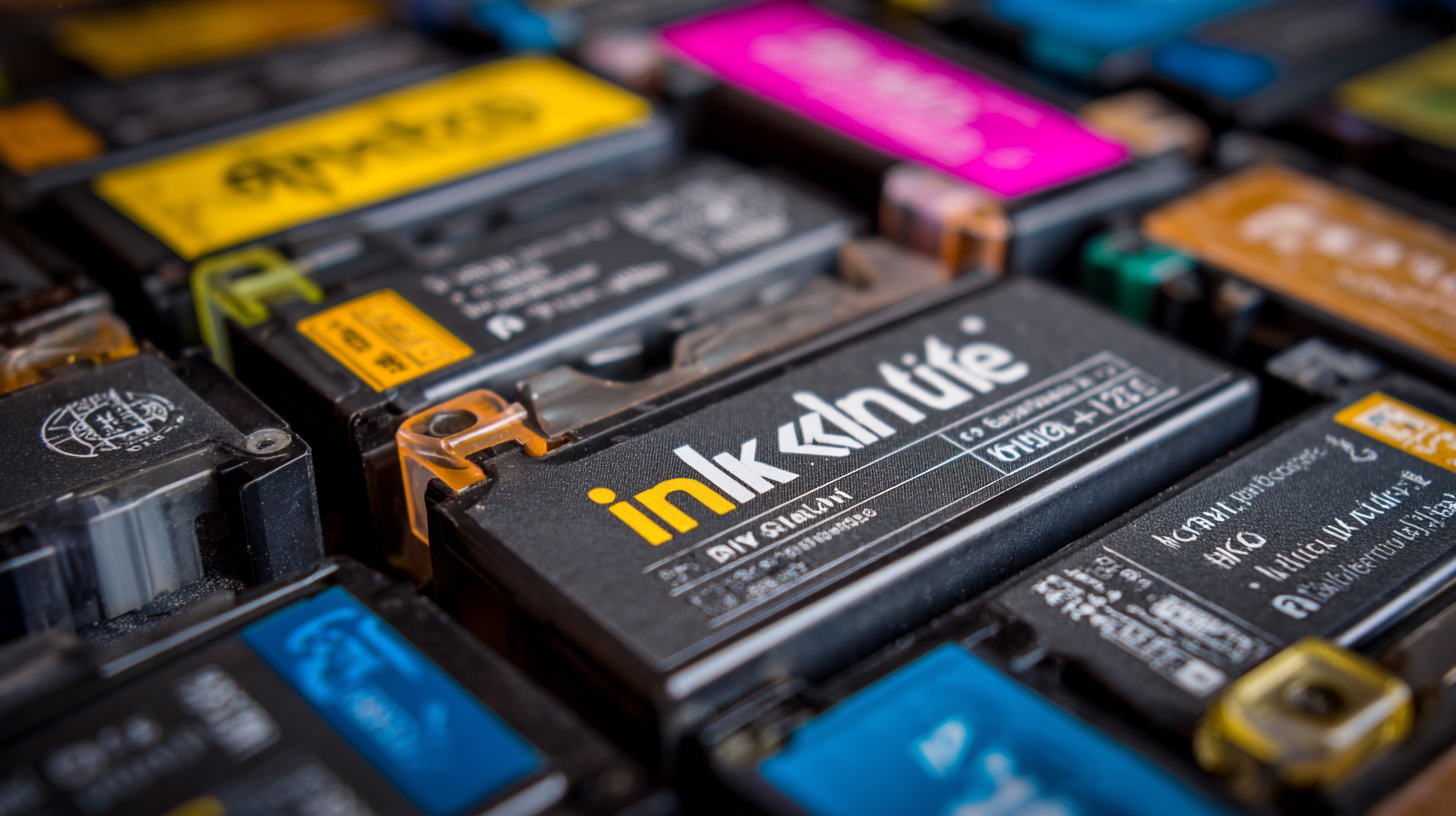Partner Login
Enter your username and password here on order to log in on the partner portal:
No registered partner yet?
Register nowExploring Innovative Alternatives to Best Ink Cartridges for Cost Effective Printing
In today's rapidly evolving printing landscape, the quest for cost-effective solutions has led to a noteworthy exploration of innovative alternatives to conventional ink cartridges. According to the International Data Corporation (IDC), the global printer ink market is projected to reach $24 billion by 2025, highlighting the significant financial burden associated with traditional ink cartridges for consumers and businesses alike. These ink cartridges, while essential for high-quality printing, often come with hefty price tags that can strain budgets. As organizations seek to optimize their printing expenses, various alternatives—including refillable cartridges, compatible options, and eco-friendly solutions—are gaining traction.

This blog aims to delve into the benefits of these alternatives, presenting a comprehensive overview of how they can enhance cost efficiency, reduce waste, and meet diverse printing needs without compromising quality.
The Rise of Refillable Ink Tanks: A Sustainable Choice for Budget-Conscious Consumers
The advent of refillable ink tanks has revolutionized the printing industry, offering a sustainable and cost-effective solution for budget-conscious consumers. Unlike traditional ink cartridges that can be pricey and wasteful, refillable tanks allow users to refill their ink supply at a fraction of the cost. This innovative approach not only reduces the overall cost of printing but also minimizes environmental waste, appealing to eco-conscious buyers who seek sustainable alternatives.
Moreover, refillable ink tanks provide more printing flexibility. With large-capacity tanks, users no longer have to frequently replace cartridges, leading to less downtime and greater productivity. This is particularly beneficial for small businesses or home offices that rely on regular printing for operations. Additionally, many refillable tank systems come with user-friendly designs, making the refilling process straightforward and efficient. As consumers become more aware of their printing habits and their impact on the environment, the popularity of refillable ink tanks continues to rise, marking a significant shift toward smarter printing solutions.

Exploring Third-Party Ink Solutions: Quality at a Fraction of the Cost
As the cost of ink cartridges continues to rise, many consumers and businesses are turning to third-party ink solutions as a viable alternative. According to a recent report by Consumer Reports, consumers can save anywhere from 30% to 50% on printing costs by opting for third-party cartridges without compromising on print quality. These alternatives are made to match OEM specifications, ensuring that they operate effectively with various printers. For example, a study conducted by Market Research Future highlighted that the demand for third-party inks has increased by over 25% in the past three years as users seek sustainable and economical options for their printing needs.
Moreover, advancements in technology have allowed third-party manufacturers to enhance their products, leading to improved ink formulations that deliver vibrant colors and sharper prints. A report from IBISWorld noted that the third-party ink market is projected to grow at an annual rate of 6% through 2025. This shift reflects a broader trend among consumers who are becoming more eco-conscious and looking for cost-effective solutions that do not sacrifice quality. By choosing reliable third-party ink providers, users can experience substantial savings while maintaining high standards in their print outputs.
The Impact of Eco-Friendly Ink Options on Printing Efficiency
In the quest for cost-effective printing solutions, eco-friendly ink options are gaining attention for their remarkable impact on printing efficiency. Traditional ink cartridges often contain harmful chemicals and contribute to environmental pollution, but innovative alternatives made from natural and biodegradable materials are changing the narrative. These eco-friendly inks not only reduce the carbon footprint but also enhance the overall quality of printed materials. Manufacturers are now developing inks that provide vibrant colors and sharp details while adhering to sustainable practices, ensuring that businesses and individuals can print with a conscience.
Moreover, the use of eco-friendly inks often leads to longer-lasting prints and improved performance on various media types. Many of these sustainable inks demonstrate superior adhesion and resistance to fading, meaning that prints not only look great but also withstand the test of time. As printing technologies advance, integrating eco-friendly options proves to be a smart investment, yielding both financial savings in the long term and positive environmental impact. By adopting these innovative ink alternatives, businesses can enhance their printing processes while championing sustainability.
Exploring Innovative Alternatives to Best Ink Cartridges for Cost Effective Printing - The Impact of Eco-Friendly Ink Options on Printing Efficiency
| Ink Type | Cost per Print (USD) | Print Quality (1-10) | Environmental Impact (1-10) | Average Yield (Pages) |
|---|---|---|---|---|
| Eco-Friendly Soy Ink | 0.05 | 9 | 8 | 400 |
| Recycled Ink Cartridges | 0.07 | 8 | 9 | 350 |
| Vegetable-Based Inks | 0.06 | 7 | 10 | 300 |
| Standard Pigment Ink | 0.08 | 9 | 6 | 250 |
| Water-Based Inks | 0.04 | 8 | 7 | 280 |
How to Choose the Right Alternative Ink Cartridge for Your Printer Model
When it comes to cost-effective printing, finding the right alternative ink cartridge for your printer model can be a game changer. With a myriad of options available, it’s essential to start by identifying your printer's specifications. Look for the printer model number, which can typically be found on the device itself or in the user manual. When you know the exact model, it becomes easier to sift through compatible third-party cartridges that can provide similar quality at a fraction of the price.
Next, consider the type of alternative cartridges that suit your needs—compatible, remanufactured, or refillable options. Compatible cartridges are designed to work seamlessly with your printer brand and often come at lower prices. Remanufactured cartridges, made from reused original cartridges, not only reduce waste but also offer great quality. Refillable cartridges allow you to add ink without replacing the entire cartridge, providing an eco-friendly and long-term solution. Ultimately, reading user reviews and comparing product warranties can help ensure that you choose an alternative ink solution that meets both your budgetary and printing requirements.
Future Trends in Printing Technology: Beyond Traditional Ink Cartridges
As printing technology continues to evolve, the future seems poised to move beyond traditional ink cartridges, exploring innovative alternatives that promise greater efficiency and sustainability. One significant trend is the rising popularity of eco-friendly printing solutions. Companies are now developing biodegradable or refillable cartridges that not only reduce waste but also lower the cost of printing over time.
These alternatives not only address environmental concerns but also appeal to budget-conscious consumers looking for cost-effective printing options.

Another exciting development is the use of digital printing technologies such as solid ink and liquid toner, which provide vibrant colors and high-quality prints without the limitations of traditional ink cartridges.
Solid ink, for example, comes in solid sticks and is melted during the printing process, significantly reducing waste and improving print consistency. Additionally, advancements in print-on-demand services are allowing consumers to print only what they need, further minimizing costs and material usage.
These trends signal a transformative shift in the printing industry, highlighting the potential for innovative solutions that enhance both environmental sustainability and economic efficiency.